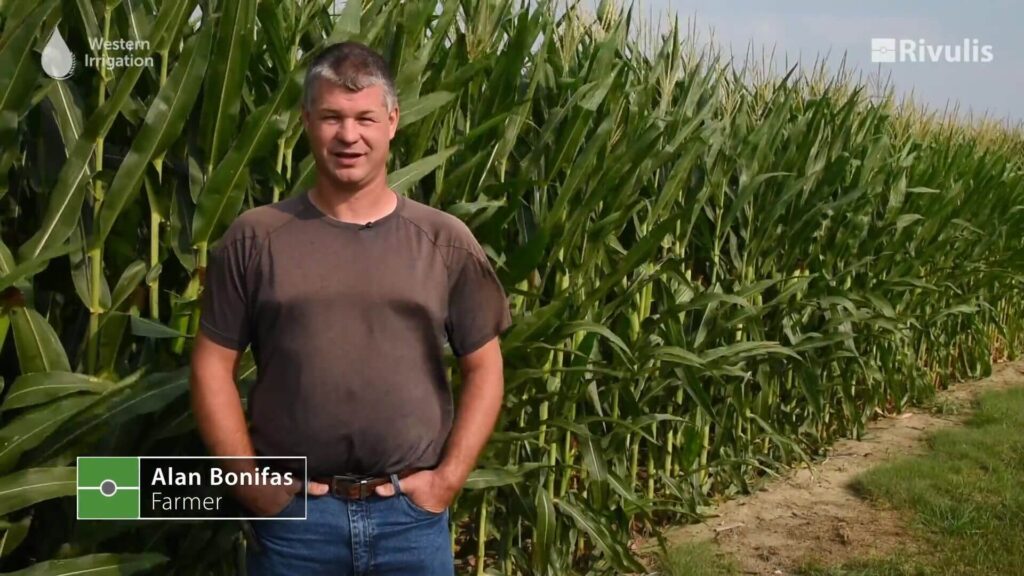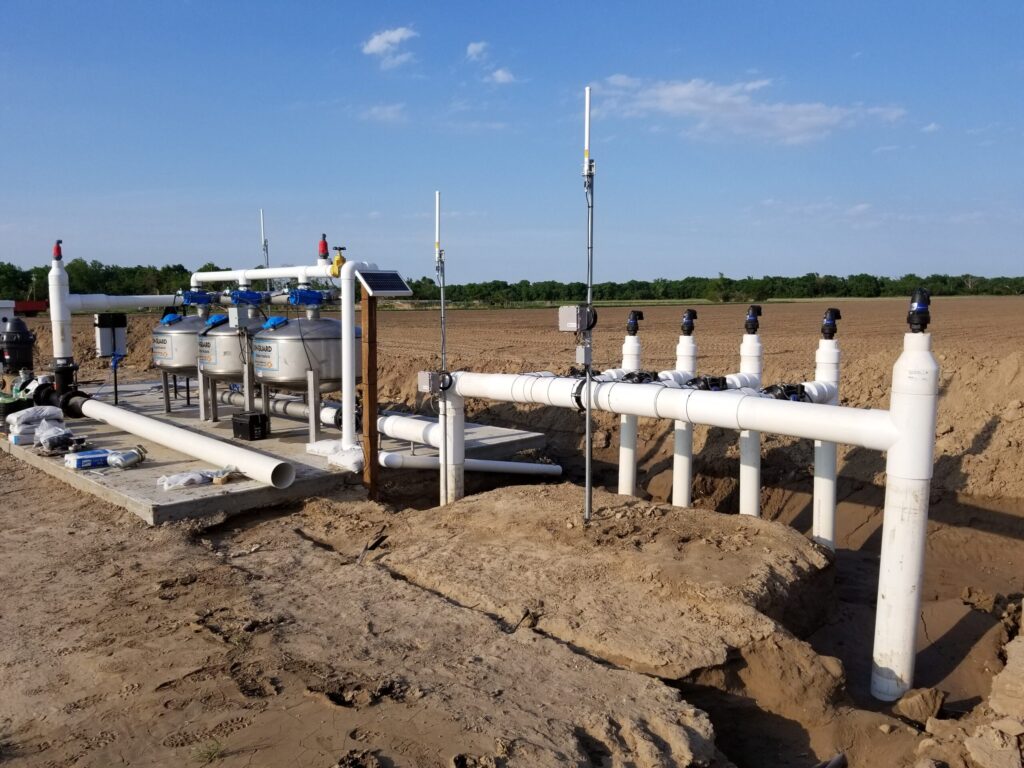The Environmental and Economic Impact of Subsurface Drip Irrigation
The Environmental and Economic Impact of Subsurface Drip Irrigation
Subsurface Drip Irrigation (SDI) is quietly transforming the way we grow crops, offering a smarter, more sustainable approach to agriculture. With water scarcity and environmental concerns on the rise, farmers and agricultural professionals are exploring innovative solutions to optimize resource use and improve crop yields. SDI stands out as one of the most effective technologies driving this change.
This blog will explore what subsurface drip irrigation is, how it works, and the incredible environmental and economic benefits it offers. We’ll also highlight the role Western Irrigation is playing in bringing SDI to farms worldwide.
Introduction to Subsurface Drip Irrigation (SDI)
Definition and Overview
Subsurface drip irrigation involves delivering water directly to the root zone of plants through a network of buried drip lines and emitters. Unlike traditional methods like sprinkler systems or flood irrigation, SDI operates beneath the soil surface, which reduces evaporation and ensures targeted water delivery. This precision not only saves water but also provides crops with the resources they need to thrive.
Historical Context
The history of irrigation dates back thousands of years, with ancient civilizations in Mesopotamia and Egypt developing some of the earliest systems for channeling water to crops. Over time, gravity-fed and flood irrigation systems dominated agriculture, until the 19th and 20th centuries ushered in innovations like sprinklers and surface drip irrigation. The development of SDI marked the next significant evolution, addressing key limitations of older systems. Today, SDI is recognized as one of the most efficient irrigation methods, particularly valued in arid regions and areas grappling with water scarcity.
Importance in Modern Agriculture
With climate change exacerbating drought conditions and making water management more critical than ever, SDI offers a sustainable solution. Agriculture accounts for approximately 70% of global freshwater use, making water-saving technologies vital for ensuring long-term food production. SDI hits this mark by minimizing waste, reducing harmful runoff, and boosting agricultural efficiency. It’s also increasingly relevant for high-yield farming in regions where every drop of water counts.

How Subsurface Drip Irrigation Works
Technical Mechanisms
At its core, SDI relies on three main components:
- Drip Tape or Tubing – Flexible plastic lines buried beneath the soil that transport water to plants.
- Emitters – Small devices inserted into the tubing that release water at controlled rates directly into the root zone.
- Filtration Systems – Ensure that debris and particles are removed from the water to prevent clogging of emitters.
These elements work seamlessly together to deliver water consistently and efficiently.
Installation Process
Setting up an SDI system begins with soil preparation, ensuring the land is leveled and free from debris. Farmers then design the layout of the drip lines, factoring in crop types, soil texture, and water needs. Drip tubing is buried at a depth of 12-18 inches, depending on the crop and field conditions. Proper filtration systems are installed to protect the drip lines from blockage, and a central control unit manages water flow and pressure. Though the installation process requires careful planning, the results offer unmatched efficiency.
Operational Insights
Once installed, SDI systems deliver water directly to plant roots at low pressure. This localized delivery eliminates water loss from evaporation and surface runoff, problems commonly associated with traditional irrigation. Sensors and timers can be integrated into the system for even greater precision, allowing farmers to automate irrigation based on real-time soil moisture conditions.
Environmental Benefits of SDI
Water Conservation
SDI stands out as one of the most effective water-saving technologies in agriculture. Research shows that SDI can reduce water use by up to 50% compared to traditional systems like sprinkler or flood irrigation. This is particularly significant in regions facing chronic drought, where every gallon of water saved translates into higher yields and better ecosystem stability.
Reduced Soil Erosion
Traditional irrigation often involves water moving across the surface, leading to soil erosion and depletion of nutrients. SDI virtually eliminates surface runoff, keeping topsoil intact and boosting long-term soil health. By maintaining stable soil profiles, SDI helps create conditions for healthier crops and reduces the risk of sedimentation in nearby waterways.
Mitigation of Chemical Leaching
Fertilizers and pesticides form a vital part of modern farming, but their leaching into groundwater can harm ecosystems and drinking water supplies. SDI’s precision reduces the risk of these chemicals washing away, as water is applied directly where it’s needed. This not only protects the environment but also ensures more efficient use of costly agricultural inputs.
Economic Advantages of SDI
Increased Crop Yields
One of SDI’s most compelling economic advantages is its potential to boost crop yields. Studies reveal that crops irrigated with SDI often produce higher yields due to consistent water distribution, reduced stress, and optimal nutrient uptake. For instance, tomato growers in California have reported yield increases of 20-30% after transitioning to SDI. Similarly, corn and cotton farmers in Texas have observed better plant health and productivity with less water use.
Cost-effectiveness
While the upfront costs of SDI systems can be significant, the long-term savings make it a cost-effective choice. Farmers using SDI report lower water bills, reduced labor costs from automated systems, and less spending on fertilizers and pesticides. Over time, these savings can offset initial investments. For crops that command high market prices, such as fruits and vegetables, the financial benefits become even more pronounced.
Return on Investment
Most farmers see a return on investment from SDI within 3-5 years, depending on factors such as crop type, farm size, and water use efficiency. Government subsidies and grants for water-saving technologies can further reduce financial barriers, making SDI an attractive option for farms of all sizes.

The Role of Western Irrigation in Promoting SDI
Company Overview
Western Irrigation has been at the forefront of innovative irrigation technologies, committed to helping farmers adopt sustainable solutions. With a mission to maximize water use efficiency and empower agricultural communities, Western Irrigation has become a trusted partner for farmers exploring SDI solutions.
Products and Services
Western Irrigation offers comprehensive products and services, including custom-designed SDI systems tailored to meet the unique needs of each farm. From high-quality drip tape and filtration units to advanced automation technologies, their solutions prioritize reliability and efficiency. Furthermore, Western Irrigation provides ongoing support to ensure systems remain functional and effective over time.
Community Engagement
Beyond products, Western Irrigation actively collaborates with farmers and agricultural organizations to promote sustainable practices. Their workshops, training programs, and partnerships with local communities play a vital role in raising awareness about the benefits of SDI. By working hand-in-hand with stakeholders, Western Irrigation is building a more sustainable future for agriculture.
Challenges and Considerations in SDI Adoption
Initial Investment and Costs
The upfront cost of purchasing and installing SDI systems can be prohibitive, particularly for small-scale farmers. While government incentives can help offset some of these costs, farmers must carefully evaluate their budgets and long-term gains before investing.
Maintenance and Management
SDI systems require ongoing maintenance to function effectively. Emitters and drip lines are prone to clogging, particularly in areas with hard water or high sediment levels. Regular cleaning, monitoring, and system repairs are essential to maintain performance, though they demand time and technical expertise.
Training and Education
Adopting SDI successfully requires farmers to understand the system’s technicalities, from installation and operation to maintenance. Training programs and support networks are crucial, ensuring that farmers can maximize the benefits of this sophisticated technology. Without adequate knowledge, the risk of inefficiency or system failure increases.
Future Prospects for Subsurface Drip Irrigation
Technological Innovations
The future of SDI is marked by exciting innovations. Integration with smart technology, such as soil moisture sensors, GPS mapping, and IoT-based control systems, promises to make SDI systems even more efficient. Advances in materials science could also result in more durable and cost-effective components, further driving adoption.
Policy and Regulation
Governments worldwide are recognizing the importance of water-efficient irrigation. Programs offering subsidies, tax breaks, or low-interest loans for SDI systems are becoming more common. Agricultural policies emphasizing sustainable practices are likely to drive greater adoption of SDI technology in coming years.
Global Trends
SDI has significant potential to expand in developing countries where water shortages are severe. Investments in infrastructure and farmer outreach initiatives can help bring this game-changing technology to regions like Sub-Saharan Africa and South Asia, boosting agricultural productivity in water-scarce areas.

Embracing a Sustainable Future with SDI
Subsurface drip irrigation is more than a technological advancement in agriculture; it’s a step toward a sustainable future. Its ability to conserve water, improve soil health, and increase crop yields addresses crucial environmental and economic challenges. By adopting SDI system, farmers can not only secure their livelihoods but also contribute to global food security and environmental resilience.
At Western Irrigation, our commitment to empowering farmers with innovative solutions underpins all our efforts. If you’re considering making the transition to SDI, we invite you to explore our products, services, and educational resources. Together, we can build a sustainable agricultural landscape for generations to come.
